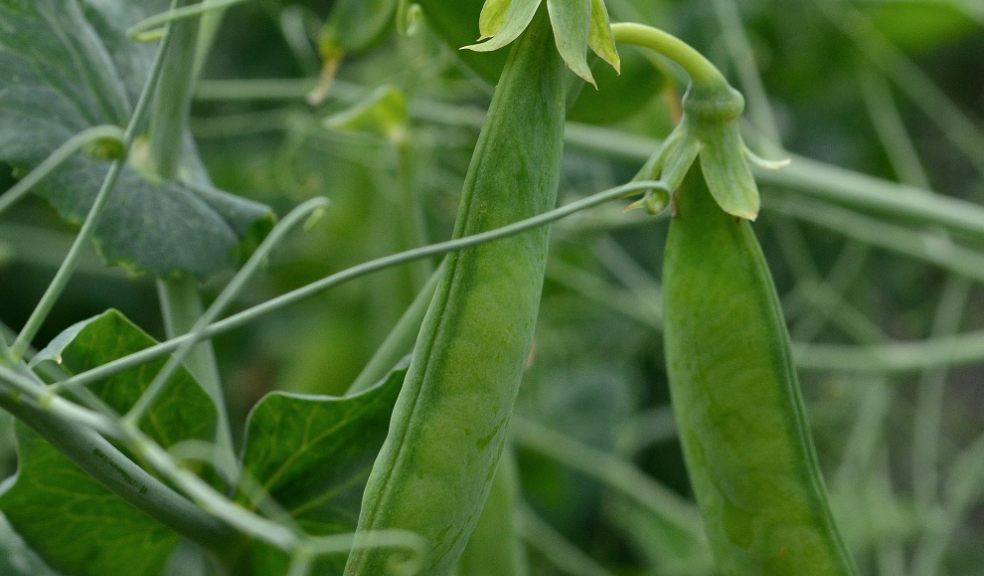
3 Pea varieties you need to know
Peas are among the most versatile and rewarding crops to grow — whether you're cultivating lush microgreens or harvesting full pods from your garden. But with so many types of peas and different types of pea seeds available, it can be tricky to choose the right one for your needs. From vibrant green pea sprouts packed with nutrients to rare heirloom peas varieties used in specialty farming, understanding the top types of peas to grow can help you make better choices for both yield and flavor. In this article, we spotlight three standout varieties that every grower — hobbyist or commercial — should get to know.
1. Exploring the Different Types of Peas: From Garden to Plate
Not all peas are created equal — especially when it comes to growing microgreens. Whether you're aiming for straight, tendril-free shoots for clean presentation or lush, curly tops for visual flair, understanding the key differences between types of peas is essential. Let’s walk through the major categories and traits that set pea varieties apart, so you can choose the right one for your setup.
1. 1 Choosing the Right Types of Peas to Grow?
From a grower’s perspective, pea seeds differ in more than just color or size. The different types of pea seeds we offer at MP SEEDS are categorized based on their:
- Growth speed (some sprout fast, others take longer but grow taller)
- Stem height and thickness
- Presence or absence of tendrils
- Seed appearance (smooth vs. speckled)
For example, if you're after green pea sprouts with impressive height, go for a tall variety like Jumbo. If you're working in high-turnover settings and need speed, Foxy or Dunn peas are reliable choices that establish quickly. Check out the wide range of products from Mp Seeds: https://mpseeds.eu/
1.2 Speckled vs. Tendril-Rich Peas: What’s the Difference?
A key distinction in peas varieties for microgreens is whether they produce tendrils. Speckled peas like Dunn and Salad are known for their smooth, straight stems and lack of curly tendrils. This makes them ideal for chefs who want clean presentation and easy handling.
On the other hand, tendril-producing varieties such as Green or Jumbo bring a wild, decorative flair to your trays — perfect for adding texture and volume to restaurant dishes or retail packaging.
1.3 Practical Tip for Growers?
If you're just getting started with microgreens or testing out new types of peas to grow, consider running a side-by-side tray trial. Compare tendrilled and non-tendrilled varieties to see which performs best in your light, climate, and tray system. Always start with tested, food-safe seeds for consistent germination and crop quality.
2. Green Pea Sprouts: A Nutritious Powerhouse You Can Grow at Home
Few microgreens are as satisfying — or as beginner-friendly — as green pea sprouts. Their rapid growth, crunchy texture, and slightly sweet flavor make them a favorite among home growers and professional chefs alike. Whether you're sprouting on your kitchen counter or in a dedicated grow room, this is one of the most rewarding types of peas to grow.
2.1 Why Green Pea Sprouts Are Perfect for Home Growing
If you're looking for a reliable and easy start to your microgreen journey, green peas are an excellent entry point. These pea varieties germinate quickly after soaking and produce robust shoots with minimal effort. All you need is water, light, and a breathable container to get started — no complex equipment required. Within just a few days, you'll have vibrant green pea sprouts packed with flavor and nutrients.
2.2 Nutritional Benefits in Every Bite
Beyond their appealing texture and taste, green pea microgreens are a genuine nutritional powerhouse. Rich in plant-based protein, fiber, vitamin C, folate, and antioxidants, they offer a functional food option for health-conscious eaters. Incorporating green pea sprouts into your meals can boost your nutrient intake while adding fresh, green crunch to everything from sandwiches to smoothies.
2.3 From Soaking to Harvest: A Quick Overview
These types of peas are typically soaked for 8–12 hours before sprouting. Within 2–4 days, you'll see short, edible sprouts — or wait 8–12 days for fuller, leafy microgreens. The different types of pea seeds available for sprouting have varying performance characteristics, so choosing high-quality, tested seed is crucial. At MP SEEDS, every batch of pea seeds is tested for sprouting rate and certified for safe consumption.
2.4 Pro Tip: Grow More with Less
Green peas are especially efficient for home growers because they don’t require expensive substrates or lighting setups. Just be sure to rinse them daily to avoid mold and ensure even growth. Looking to scale up? These same seeds are suitable for tray systems and vertical farms — proving that green pea sprouts truly bridge the gap between hobby and commercial cultivation.
3. Top Pea Varieties Every Microgreener Should Know
When it comes to producing high-quality microgreens, not all peas perform the same. Some offer thick, juicy stems ideal for bulk trays, while others grow more delicately, with clean lines and minimal tendrils. Choosing the right types of peas is essential for maximizing yield, consistency, and market appeal — especially if you're growing for restaurants or retail.
3.1 Green Pea – The Microgreen All-Star
Among all pea varieties, classic green peas (Pisum sativum) are the most widely used for microgreens. They grow fast, produce tall, crunchy shoots, and deliver that sweet, nutty flavor chefs love. These green pea sprouts are a consistent top performer for both home sprouting and commercial tray production.
3.2 Dunn and Salad Peas – Speckled, Straight, and Tender
If you're looking for pea varieties with smooth, tendril-free stems, Dunn and Salad peas are your go-to options. These belong to the "speckled pea" group — not just for their seed appearance, but for their structure. They grow clean and upright, making them perfect for growers who prioritize easy harvesting and elegant presentation without the curly chaos of tendrils.
✅ Ideal for: Fast turnover crops, fine dining presentation, minimal post-harvest handling
3.3 Jumbo and Foxy – For Tall and Vigorous Shoots
Need height and volume? Jumbo peas produce some of the tallest microgreens in our lineup, making them perfect for growers who want dramatic, lush trays. Foxy is another standout among different types of pea seeds, combining speed with vigor — a great choice if you’re aiming for fast growth and bold texture.
✅ Ideal for: Bulk production, garnishes with volume, impressive shelf display
3.4 Choosing the Best Types of Peas to Grow
Every grower has different needs — whether it’s about space, harvest time, or client preferences. That’s why experimenting with a few types of peas to grow can make all the difference.
4. Best Types of Peas to Grow in Your Garden This Season
Peas aren’t just for sprouting and microgreens — they’re also incredibly rewarding to grow in the garden. Whether you're a seasoned horticulturist or just starting your backyard vegetable patch, choosing the right types of peas to grow can make all the difference in flavor, harvest timing, and overall success.
4.1 Shelling Peas – A Garden Classic
Also known as garden peas, these traditional varieties are grown for the sweet, plump seeds inside the pod. Though the pods themselves are not edible, the flavor of freshly shelled peas is unmatched. If you're after that nostalgic garden-fresh taste, this is one of the most satisfying types of peas to plant.
✅ Best for: Fresh eating, freezing, cooking
Tip: Harvest when pods feel full but still tender.
4.2 Snow Peas – Flat Pods, Fast Results
These peas are grown for their flat, tender pods that are harvested before the seeds inside develop. Known for their fast growth and crisp texture, snow peas thrive in cool conditions and are ideal for small gardens or balcony containers.
✅ Best for: Stir-fries, raw snacking, gourmet dishes
Tip: Pick regularly to encourage continuous production.
4.3 Sugar Snap Peas – Sweet and Crunchy All-in-One
Combining the best of both worlds, sugar snap peas offer plump pods that are fully edible, sweet, and satisfyingly crisp. These pea varieties are vigorous climbers and benefit from trellising — but reward growers with heavy yields and delicious crunch.
✅ Best for: Fresh eating, salads, garden-to-table meals
Tip: Give them support and plenty of sunlight for maximum yield.
Plant for Purpose
From early spring snacks to full-summer harvests, the best types of peas to grow depend on your climate, space, and goals. Whether you’re focused on fresh pods, leafy greens, or nutritious green pea sprouts, there's a perfect match waiting in pea seeds collection ?













